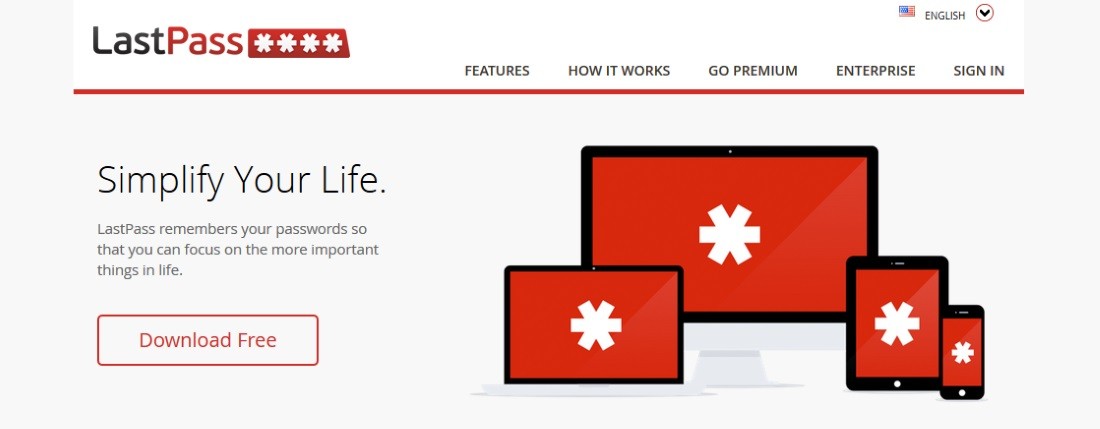How to Mess Up Your WordPress Blog in 10 Simple Steps

Launching a blog – technically speaking – is ultra easy. Really. All you need is 10 minutes of your time, $5 to spare on hosting, and you’re good to go! Plus, with all the 1-click install features that many web hosts provide these days, you don’t even have to know what’s going on under the hood. That being said, I’m afraid this is where the fairytale ends.
Taking care of the initial setup is just the beginning of your adventure, and from that point going forward, you will have to deal with a lot of challenges, all of which can make your blogging a lot harder. Now, I’m sure you’ve noticed that blogging advice is not something that’s scarce on the web, so what I want to do today is take a different approach. Let’s make it interesting and talk about what to do to mess up your blog.
I’m going to tackle the topic from two separate angles:
- Technical issues – those that can kill your blog overnight just like that, with no warning
- Issues with the way you publish content – those that will continue killing your blog gradually, one step at a time
1. Not Being Ready for a Hardware Fail
There’s something you should know about hardware (servers, hard disks, other machines that basically keep your site online). The thing is that it’s only a matter of time before your server fails you. There really is no if. There’s only when.
Every person who has ever worked in data recovery will tell you that all hard disks (that’s 100 percent) fail at some point. Granted, some fail on the second day, some fail after 20 years of flawless performance, but all of them fail eventually. Here’s an interesting post by Backblaze on how long disk drives last, just to give you an idea. Therefore, instead of hoping that the failure won’t happen to your site’s data, you’re way better off preparing yourself and setting things up in a way so you can get your site running again as soon as possible.
First of all, you need to take care of site backups. In its core, backing up is a simple thing. It’s about preserving a copy of your website somewhere else other than your standard server. You can get such functionality with a plugin like UpdraftPlus. It will create a backup copy and you have the options to store it in your Dropbox, Google Drive, email, etc. You can then take this backup and use it however you wish. Or you can go for a more high-end solution and get yourself a VaultPress account.
Another service worth checking out is CloudFlare. CloudFlare creates multiple copies of your website and distributes them across a network of servers. You get a load of benefits because of this, and some additional site security is just one of them. (CloudFlare is free, by the way.)

Having taken care of site backups and having a tool like CloudFlare in your arsenal will allow you to keep your site online for a little longer (should it fail) and also enable you to restore it on a new web host quicker, in case of a major hosting fail.
2. Not Using A Security Plugin
Although I know that plugins are just as much part of the problem as they are part of the solution (there are often a lot of security flaws in outdated or low quality plugins), having some high-quality security plugins can only pay off.
Here’s the thing. There are many different threats just waiting to throw a punch at your website. You have hackers, bots, server vulnerabilities, and etc. Some good security plugins will help you protect yourself from these threats. Here are two of my favorite ones:
- BulletProof Security: One of the top .htaccess security plugins out there. The best thing about it is that you don’t even have to know what .htaccess is to use this plugin. There are built-in presets that will take care of your site on autopilot.
- Sucuri Security: You can use it to scan your site occasionally and make sure that nothing happened to its integrity in the meantime. It performs a number of checks against things like malware, XSS, JavaScript injections and a lot of other stuff.
3. Falling for a Pretty (on the Surface) Free Theme
Everybody wants to have a nice looking site. That’s only natural. But you need to be careful not to get a poorly coded theme just because you like it visually. I’ve said it multiple times during my WordPress career, but I’ll say it again – be careful when it comes to free themes. Very often, they are chock full of encrypted code, static SEOd links, footer-blocking JavaScript, and who knows what else. Of course, there are some free themes out there that are of high quality, but only download free themes from reputable sources.
Even though you will stumble upon hundreds of list posts on the web, giving you the “top free WordPress themes for [BLANK],” you shouldn’t trust them all that much. The people who publish those lists rarely go through each theme individually to check whether it’s actually a quality product. Instead, they just rely on the visuals. What it means for you – the reader – is that you can never know for sure if a given theme is going to be safe. In short, be cautious when looking for a free theme. Try these alternative paths instead:
- Right here at WPExplorer we offer some pretty awesome free WordPress themes. Our free themes are coded with care and include premium features such as custom post types, Google fonts, theme sliders and more.
- The official theme directory at WordPress.org. All themes in the directory have been tested, so you at least don’t have to deal with malicious code that someone included on purpose.
- Commercial theme stores. Apart from offering premium (paid) themes, some theme stores also give away free themes as a promotional method.
And finally, I know that this advice might not sit well with some of you, but if you want a safe, secure, functional, and nice looking theme, you’ll have to pay for it 90% of the time. You can also hire a designer to build a custom theme for you, but that will cost you much much more.
4. Not Setting up an Editor Account for Daily Blogging
WordPress has a range of built-in user roles that you can use when creating new accounts for yourself or for your team. There are accounts for Subscribers, Contributors, Authors, Editors, and Administrators. The default account that WordPress gives you when you first install your site is the main Administrator account (by the way, don’t ever make your login “admin”). The tricky part that they don’t tell you is that it’s a very good practice not to use this account for regular use. The Administrator account has access to every section of the wp-admin and can be used to change every setting. You just don’t need it to handle your standard blogging tasks.

For writing and publishing, create an Editor account for yourself with a semi-complex password that you can still remember. And when it comes to the Administrator account, change the login to something non-obvious (like “the-site-master-chief”), and change the password to something unguessable using multiple character types (like “dfqWW341##2”). Then store this password with a tool like 1Password or LastPass.
5. Showcasing Negative Social Proof
This really amazes me, but for some reason, bloggers keep installing those big sets of social media share buttons all over their sites (multiple buttons for Facebook, Twitter, Pinterest, and so on) only to have them display all zeros. Like this:

What does this tell you? Here’s a hint: It tells you that the page you’re reading is unpopular. And continuing that thought, it also tells you that you probably shouldn’t be wasting time reading it either. Don’t get me wrong, I think that social media buttons are awesome. They provide the easiest way for your visitors to share your content. But you need to use them the right way if you want them to help you grow your blog instead of harming your efforts through negative social proof. Two solutions:
- Use a social media sharing plugin that doesn’t show the numbers at all (like AddThis Share Buttons).
- Use a social media sharing plugin that displays the numbers only when they reach a given set threshold (like Social Warfare).
6. Using Tags and Categories Randomly
In its core, categories and tags are meant to make navigating around your content easier. In other words, you should only use categories and tags to help your readers understand what a given post is about. Categories are very general in nature. I actually encourage you to create only a handful of categories for your blog, and then assign your blog posts to just one category each. For instance, if your blog is about cooking, the categories can be: breakfast, lunch, dinner.
With tags, it’s a bit more complicated. One of the best reader-friendly approaches I’ve found is to treat them like a list of topics that your post is about. For example, let’s say there’s a post titled “Top 10 Ways to Market Your Business Online.” The title itself doesn’t give away much regarding the actual contents. However, if you see that it’s tagged with “Facebook, Twitter, email marketing, local SEO” then it’s a whole different story. You get a very clear insight regarding the range of the topics that await inside.
Tagging Tips
Here’s a set of guidelines you can use whenever tagging your posts:
- Go through your post, pick the individual topics it discusses, use them as tags.
- Stick to general terms. Just like in the example above (“Facebook, Twitter, email marketing, local SEO”).
- Don’t treat tags as an SEO tool, and don’t use multi-word key phrases (keywords) as tags.
- Don’t repeat the same tag using multiple alternatives all having the same meaning. Example: “Facebook advice, Facebook tips, Facebook tricks.”
Note: To make working with tags easier, feel free to check out a plugin like Automatic Post Tagger. While this plugin hasn’t been updated in a few years (use at your own risk), it does appear to still work. It allows you to set a fixed list of tags, and then analyzes every post you publish and assigns the tags automatically. This is extra handy.
7. Being Inconsistent with Content Length
Just for the sake of it, let’s say you’re a New York Times subscriber. How would you feel if one week, the newspaper was 20 pages long, the next week 200 pages long, and the week after that 56 pages long? Wouldn’t it be confusing? This is exactly what your readers feel when you’re being inconsistent with your content length
If you are consistent, on the other hand, your readers always know what to expect when they see a new headline. And in this case, being predictable only works in your favor. Choose a target content range (we shoot for 1500-2500 words on WPExplorer) and stick to it.
8. Focusing on Monetization Way Too Early
Well, when I say “way too early” what I actually mean is “hoping to make full-time income way too early.” Setting up some monetization channels up front is a good habit in itself. That way, you’re letting your readers know that the blog can possibly become a for-profit venture at some point. So you’re less likely to experience any backlash when you roll out other monetization methods later on.
But the part that many people get wrong is blasting their blogs with AdSense section on top of AdSense section on top of paid promotion, so it seems that the actual content doesn’t even play a main role. I encourage you to take a different route. Start small. Set up a small AdSense block somewhere on your WordPress blog if you want to. You can do so with a simple Text Widget – just place your AdSense code there. Then start including affiliate links in your posts (just don’t forget to include an FTC disclosure on your page). Don’t treat it as a surefire way to make a profit, but as something to get your readers used to some form of monetization. That’s all.
9. Not Enabling Yourself for Consulting or Direct Client Work

Something you may be thinking right now is why is this guy spending so much time talking about various money-related stuff. I mean, is it really that important to your blog’s well-being? Well, as it turns out, it is.
Let me put it this way. I’ve never met anyone who’s abandoned their blog because of a technical issue. But I’ve come across tens of people who did so because they could no longer keep investing in the blog with no return on the horizon. Whether we like it or not, money matters. Advertising – mentioned in the previous point – is one of the most popular methods to make money with a blog. It’s a prime example of a passive income stream – something that makes you money without any active work on your part.
But there’s also the other side of the coin. Active income. In other words, offering your expertise and time in exchange for money. Building your brand and reputation up to a point where you will have a constant stream of clients begging to hire you can and will take a lot of time. But as they say, the best time to plant a tree is 20 years ago, the second best is today. So start now. Set up a “Hire Me” page – similar to an “About” page, but geared at convincing a prospective client on why they’d want to hire you.
Hire Me Page Tips
A good “Hire Me” page should consist of these elements:
- a good headline that encourages people to reach out to you
- services you offer
- social proof (the number of comments/shares you’re getting)
- testimonials
- contact form
10. Not Having an Email List
“For a lot of site owners, over 75% of visitors probably won’t even give your site another look in.” –Adam Connell of Blogging Wizard
It’s just the way it is on the web. There’s simply too much distraction going on everywhere for people to stick around for long. However, one of the few effective ways to get them back is to have an email subscription option. When someone subscribes, they get on your newsletter list, at which point you can let them know via email every time you publish a new article. It will effectively get a percentage of those people back to your site.
Luckily for everybody, these days, setting up a newsletter is rather simple. We wrote about plugins to grow your email list and email drip campaigns not that long ago. Feel free to review these posts to get the full how-to.
Is there anything else you should worry about?
Sure, there are tons of things that can cause you trouble from a technical point of view. Luckily, we’ve covered many of them in our previous posts, so instead of listing everything here again, I’ll just give you the links:
- The Most Common Onsite WordPress SEO Mistakes
- Most Common Mistakes of WordPress Beginners
- Common WordPress Security Mistakes Many Websites Make
- 22 Conversion Killing Mistakes on Your WordPress Website
- 15 WordPress Mistakes to Avoid at all Costs
Although there’s much that can go wrong, don’t get discouraged. Let’s not forget that WordPress is an extraordinary piece of software and that it will simply take some time before you become proficient at it. For now, just start by getting familiar with the things described here and get ready for the second part. In it, we’ll be covering a completely different kind of ways to mess up your blog.
Which is the deadliest?
So now that we’ve gone through the whole list of 10 steps, let’s take a minute to try and pick the biggest blog killer of them all. What’s your opinion? Is it any of the technical issues? Or maybe you’re more like me and think that not making any money from the blog for a long period of time is even more deadly? Either way, feel free to share in the comments, and more importantly, also feel free to not make any of these mistakes on your blog.




Hi dear , Thanks for good post, King regards
Hi Karal
Backups, security and a great theme are my top 3 items and you’ve got them all covered.
And… add your security plugins before you start with the non essential plugins.
Also agree with a good strong password for all accounts – I use the Norton password generator combined with a password manager.
Adding security plugins before anything else is a great point! Thanks for sharing.
I would have preferred to read How NOT To Mess Up Your Blog In 10 Simple Steps